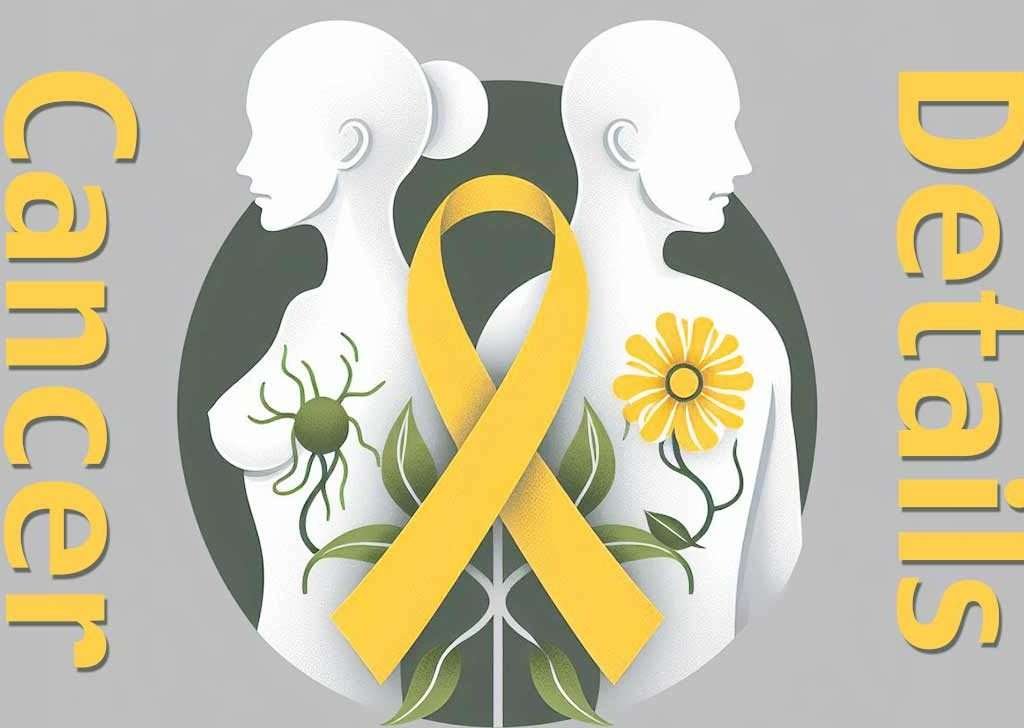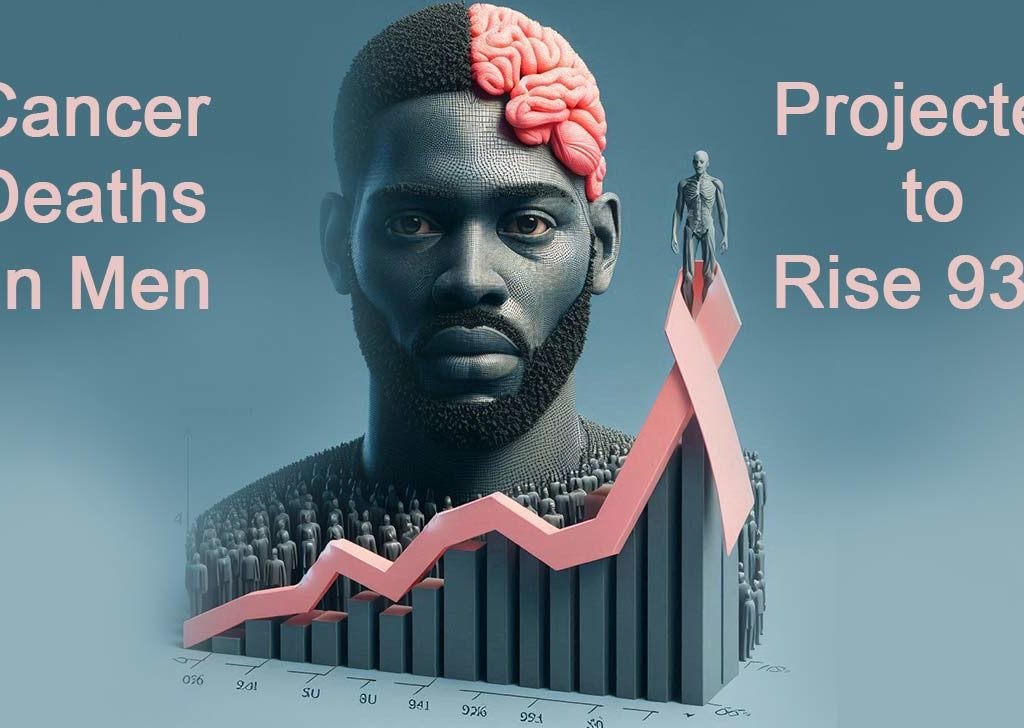Current research does not conclusively prove that cellphone use causes brain cancer. Studies show mixed results, requiring further investigation for clarity.
Cellphones have become essential in modern life, offering convenience and connectivity. Concerns about their potential health risks, especially regarding brain cancer, have sparked widespread debate. Many users are anxious about prolonged exposure to radiofrequency radiation emitted during calls and data transmission.
While some studies suggest a link, others find no significant correlation. Public health organizations continue to monitor research findings closely. Understanding the risks and benefits of cellphone use is crucial for informed choices. As technology advances, staying updated on health implications remains essential for users everywhere.
Can Cellphone Use Cause Brain Cancer?
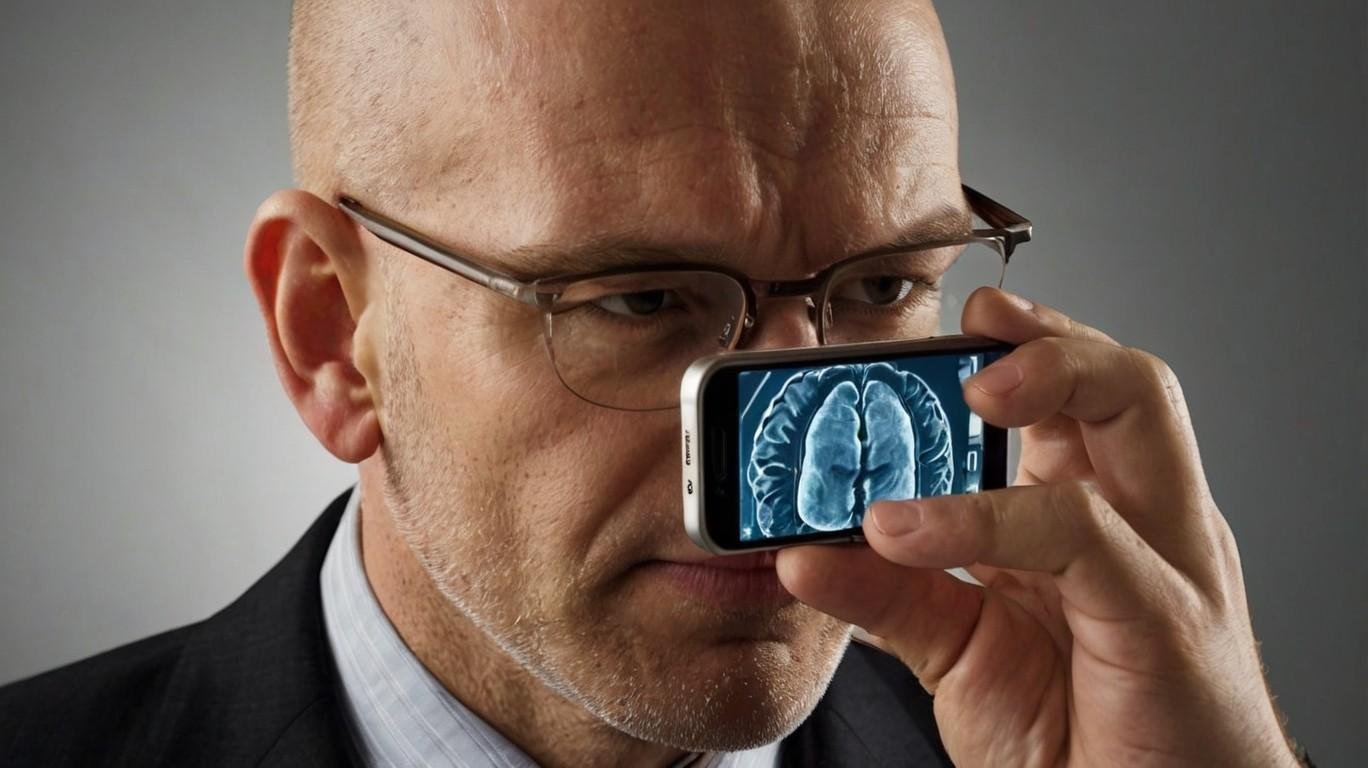
Cellphones Not Linked To Brain Cancer Risk, Who Review Of 63 Studies Finds
A recent WHO review of 63 studies indicates that cellphone use does not increase the risk of brain cancer. This finding provides reassurance for millions of users worldwide concerned about potential health impacts. Scientific evidence continues to support the safety of everyday cellphone usage.
The debate surrounding cellphone use and its potential link to brain cancer has been ongoing for years. Many people often express concern about the health implications of prolonged cellphone exposure. A recent review by the World Health Organization (WHO) sheds some light on this matter, offering a comprehensive evaluation of existing research.
Who’s Comprehensive Review
A thorough analysis conducted by the WHO examined a total of 63 studies related to cellphone usage and brain cancer. The findings are crucial for understanding any possible risks associated with mobile phone radiation.
- No Significant Evidence: The review concluded that there is no substantial evidence linking cellphone use to an increased risk of brain cancer: This finding is based on an extensive body of research involving thousands of participants over several decades.
- Long-Term Effects: Researchers found no clear indication that long-term cellphone use contributes to the development of tumors: The studies analyzed included both short-term and long-term exposure scenarios, and none showed a definitive causal relationship.
Ongoing Research And Public Health Implications
While the WHO’s findings are reassuring, ongoing research continues to monitor the situation. It’s essential to remain informed about potential health risks associated with technology.
- Continued Surveillance: The WHO emphasizes the importance of ongoing research: Monitoring new data helps ensure public health remains a priority as technology evolves.
- Public Awareness: Educating the public about safe cellphone practices is essential: Awareness campaigns can guide users on minimizing exposure, even if the risks are currently deemed low.
Limitations Of Current Studies
Despite the reassuring results, some limitations exist in the current body of research. Acknowledging these limitations is important for a balanced understanding.
- Variability in Study Designs: Different methodologies and sample sizes can impact findings: Variations in how studies are conducted may lead to inconsistencies in results.
- Need for Longitudinal Studies: Long-term data is still needed to provide more conclusive evidence: Future research should focus on longitudinal studies to assess any gradual changes in health outcomes over time.
Shifting View On Cellphones And Cancer Risk
Debates continue over the potential link between cellphone use and brain cancer. Recent studies suggest that while concerns exist, definitive evidence remains elusive. Understanding the risks is essential as technology evolves and usage patterns change.
The connection between cellphone use and brain cancer has sparked considerable debate over the years. As technology continues to evolve, so do perspectives on health risks associated with mobile devices. Many individuals wonder whether everyday use of smartphones poses a genuine threat to their well-being.
Changing Perspectives In Research
Research on cellphones and cancer has undergone significant transformation. Initial studies raised concerns, but newer findings provide a more nuanced understanding.
- Early studies: Suggested a potential link between cellphone radiation and brain tumors, generating widespread alarm: Many people began to limit their cellphone use.
- Recent research: Indicates no conclusive evidence supporting the cancer risk: Large-scale studies have not established a definitive causal relationship.
- Regulatory stance: Organizations like the WHO and FDA have stated that current evidence does not show cellphones cause cancer: They recommend continued monitoring as technology advances.
Public Perception And Awareness
As studies progress, public opinion about cellphone safety has shifted dramatically. Awareness campaigns play a crucial role in informing the general populace.
- Increased awareness: More people are informed about cellphone safety, leading to cautious usage: Educational initiatives have made individuals more conscious of their habits.
- Fear versus facts: Misinformation often spreads faster than accurate information, creating unnecessary anxiety: Social media can amplify fears without scientific backing.
- Health guidelines: Experts now recommend practical tips for safer cellphone use, such as using speaker mode or headphones: These strategies help minimize exposure to potential radiation.
Future Directions In Research
The dialogue surrounding cellphones and cancer risk is far from settled. Future research will play a pivotal role in understanding the long-term effects of mobile technology.
- Longitudinal studies: Ongoing research will track cellphone usage over decades to assess any potential health impacts: This approach could yield more definitive conclusions.
- New technologies: As cellphones evolve, researchers will need to investigate the safety of emerging technologies like 5G: Understanding new radiation types will be crucial.
- Community involvement: Engaging the public in research can enhance understanding and foster a collaborative approach to health education: Citizen science initiatives can empower communities to stay informed.
Understanding the shifting views on cellphone use and cancer risk is essential for making informed decisions about technology and health. As science progresses, staying updated with credible information will help navigate any concerns related to mobile devices.
What To Know About Radiation And Mobile Phones

Concerns about radiation from mobile phones and its link to brain cancer have been widely discussed. Research shows mixed results, with some studies suggesting a potential risk while others find no significant evidence. Staying informed about usage habits and safety guidelines can help mitigate any potential dangers.
Mobile phones have become an integral part of daily life, but concerns about their safety continue to surface. Many individuals wonder whether cellphone use could potentially lead to serious health issues, such as brain cancer. Understanding the relationship between radiation and mobile devices is essential to forming informed opinions on this matter.
What Is Cellphone Radiation?
Cellphones emit electromagnetic radiation, a type of energy that can affect the body. It’s important to grasp the nature of this radiation to assess any potential risks.
- Types of Radiation: Cellphones primarily emit non-ionizing radiation: this type does not have enough energy to remove tightly bound electrons from atoms.
- Radiofrequency (RF) Energy: This is the specific type of non-ionizing radiation associated with mobile phones: it is used for communication and can cause tissues to heat slightly during use.
Guidelines For Safe Cellphone Use
To minimize any potential risks, following some safety guidelines can be helpful. Here are some practical tips to keep in mind.
- Limit Call Duration: Keeping conversations short can reduce exposure time: consider using text messages for communication.
- Use Hands-Free Devices: Using earphones or speaker mode keeps the device away from your head: this can help decrease direct exposure to radiation.
- Maintain Distance: Holding the phone away from your body can lessen radiation contact: try to avoid carrying your phone in your pocket.
Current Research On Radiation And Health
Ongoing studies seek to understand the long-term effects of cellphone radiation on health. The findings so far have been mixed and warrant careful consideration.
- Mixed Results: Some studies suggest a possible link between cellphone use and certain types of brain tumors: however, these studies often have limitations, such as small sample sizes.
- Regulatory Stance: Organizations like the WHO have classified RF radiation as possibly carcinogenic: this classification highlights the need for further research to draw definitive conclusions.
Practical Steps For Concerned Users
Taking proactive steps can help alleviate concerns about cellphone radiation. Here are some strategies to consider for safer usage.
- Stay Informed: Regularly check for updates from trusted health organizations: staying educated on new research can help you make informed choices.
- Choose Lower EMF Devices: Some phones are designed to emit less radiation: research models and brands that prioritize safety features.
- Monitor Usage: Keeping track of how much time you spend on your phone can help manage exposure: consider setting limits for daily use.
By understanding the nuances of cellphone radiation and applying sensible usage strategies, individuals can navigate their mobile habits while staying informed about potential health implications.
What Are The Risk Factors For Brain Cancer?
Cellphone use raises concerns about potential brain cancer risks. Factors such as genetic predisposition, exposure to radiation, and environmental influences may contribute to the development of this disease. Understanding these risk factors can help individuals make informed choices about their cellphone usage and health.
Understanding the risk factors for brain cancer is crucial for awareness and prevention. While research continues to explore various causes, several factors have emerged as significant contributors to the risk of developing this serious condition.
Genetic Predisposition
Some individuals may have a higher chance of developing brain cancer due to inherited genetic mutations.
- Family history: A background of brain tumors in the family can increase risk.
- Genetic syndromes: Conditions like neurofibromatosis and Li-Fraumeni syndrome are linked to higher incidences of brain cancer.
- Chromosomal abnormalities: Specific changes in chromosomes can predispose individuals to tumors.
Environmental Exposures
Certain environmental factors can play a role in brain cancer risk.
- Radiation exposure: Previous radiation therapy to the head or neck significantly raises risk.
- Chemical exposure: Long-term exposure to certain industrial chemicals may contribute to tumor development.
- Pesticides: Some studies suggest that agricultural workers exposed to pesticides may have a higher risk.
Age And Gender
Both age and gender can influence the likelihood of developing brain cancer.
- Age: Brain tumors are more common in older adults, though they can occur at any age.
- Gender differences: Men are generally at a higher risk than women for certain types of brain tumors.
Immune System Function
The health of your immune system can impact your risk of brain cancer.
- Autoimmune disorders: Conditions that weaken the immune system may increase susceptibility.
- Organ transplant recipients: Individuals who have undergone organ transplants often take immunosuppressive drugs, elevating their risk.
Lifestyle Choices
Some lifestyle factors may also contribute to the risk of brain cancer.
- Smoking: Tobacco use has been associated with various cancers, including brain tumors.
- Alcohol consumption: Heavy drinking may elevate risk, particularly for certain tumor types.
- Diet and exercise: A poor diet and lack of physical activity can negatively impact overall health and potentially influence cancer risk.
By being aware of these risk factors, individuals can take proactive steps toward a healthier lifestyle, potentially reducing their chances of developing brain cancer.
Risk Of Cancer Higher For People Who Drink Alcohol, Even Moderately

Cellphone use has raised concerns about its potential link to brain cancer. Research suggests that prolonged exposure to radiofrequency radiation may increase risks, even in moderate usage. Staying informed about these health implications is crucial for making safer choices regarding technology use.
The discussion around cellphone use and its potential link to brain cancer often raises questions about lifestyle factors that may contribute to risk. Among these, alcohol consumption stands out as a significant area of concern. Understanding how alcohol interacts with cancer risk can shed light on broader health implications.
The Link Between Alcohol And Cancer Risk
Regular alcohol consumption has been associated with an increased likelihood of various cancers. This connection is particularly relevant for those who use cellphones frequently.
- Alcohol as a Carcinogen: Alcohol is classified as a Group 1 carcinogen by the International Agency for Research on Cancer. This means there is strong evidence linking it to cancer development.
- Impact on Cell Division: Alcohol can interfere with normal cell division, leading to DNA damage. This damage may increase the risk of cancerous growths.
- Synergistic Effects: Combining alcohol with other risk factors, such as cellphone radiation, may amplify cancer risks. This creates a dual threat that warrants attention.
Moderate Drinking And Cancer Risk
Even moderate alcohol consumption can elevate cancer risk, emphasizing the need for caution.
- Increased Risk Even at Low Levels: Studies show that even moderate drinking can increase cancer risk. This includes breast and liver cancers.
- Dose-Response Relationship: The more alcohol consumed, the greater the risk. This relationship indicates that there is no safe level of alcohol when it comes to cancer risk.
- Behavioral Considerations: Individuals who consume alcohol may engage in other risky behaviors, which could further contribute to overall cancer risk.
Understanding Personal Risk Factors
Recognizing personal risk factors is crucial for making informed health choices.
- Genetic Predisposition: Family history of cancer can compound risks associated with alcohol and cellphone use.
- Lifestyle Choices: Factors like diet, exercise, and smoking also influence cancer risk. A holistic view of health is important.
- Regular Screening: Staying proactive with health screenings can help detect potential issues early. This is vital for those at higher risk.
By understanding the interplay between alcohol consumption and cancer risks, individuals can make more informed lifestyle choices that may contribute to better health outcomes.
Cancer Care
Cellphone use has sparked debates regarding its potential link to brain cancer. Research continues to explore whether radiation from mobile devices poses a significant risk. Understanding these concerns is crucial for informed choices about technology use and health.
The concern over cellphone use and its potential link to brain cancer has sparked considerable debate. Understanding how cancer care interacts with this issue is essential for those seeking clarity.
Understanding
Cancer care encompasses various aspects, from prevention to treatment. It involves healthcare providers working together to ensure patients receive comprehensive support.
- Screening and Early Detection: Regular screenings can help identify potential issues early, improving treatment outcomes: Early detection increases the chances of successful treatment and better prognosis.
- Treatment Options: Available therapies vary based on cancer type and stage: Common options include surgery, chemotherapy, and radiation therapy, tailored to individual needs.
- Support Services: Emotional and psychological support is crucial: Counseling, support groups, and palliative care play vital roles in holistic cancer care.
The Role Of Research In Cancer Care
Research drives advancements in cancer care, aiming to uncover effective treatments and preventative measures. Continuous studies help refine our understanding of potential risks associated with cellphone use.
- Ongoing Studies: Researchers continuously explore the relationship between cellphone radiation and cancer risk: Their findings contribute to evolving guidelines and recommendations.
- Clinical Trials: New therapies undergo rigorous testing to ensure safety and efficacy: Participation in clinical trials can offer patients access to cutting-edge treatments.
- Data Analysis: Evaluating large data sets helps identify patterns in cancer occurrences: This analysis can lead to better preventive strategies and public health recommendations.
Patient Education And Awareness
Empowering patients with knowledge about cancer risks and prevention strategies is vital. Awareness can help individuals make informed decisions regarding their health.
- Informative Resources: Reliable information sources enable patients to stay updated: Websites, brochures, and community programs provide essential insights.
- Workshops and Seminars: Interactive sessions can enhance understanding of cancer risks: These events foster discussions and allow for personal questions to be addressed.
- Promoting Healthy Habits: Encouraging lifestyle changes can lower cancer risk: Diet, exercise, and reducing exposure to potential carcinogens are key components.
By focusing on these aspects, individuals can navigate the complex landscape of cancer care while staying informed about potential risks associated with cellphone use.
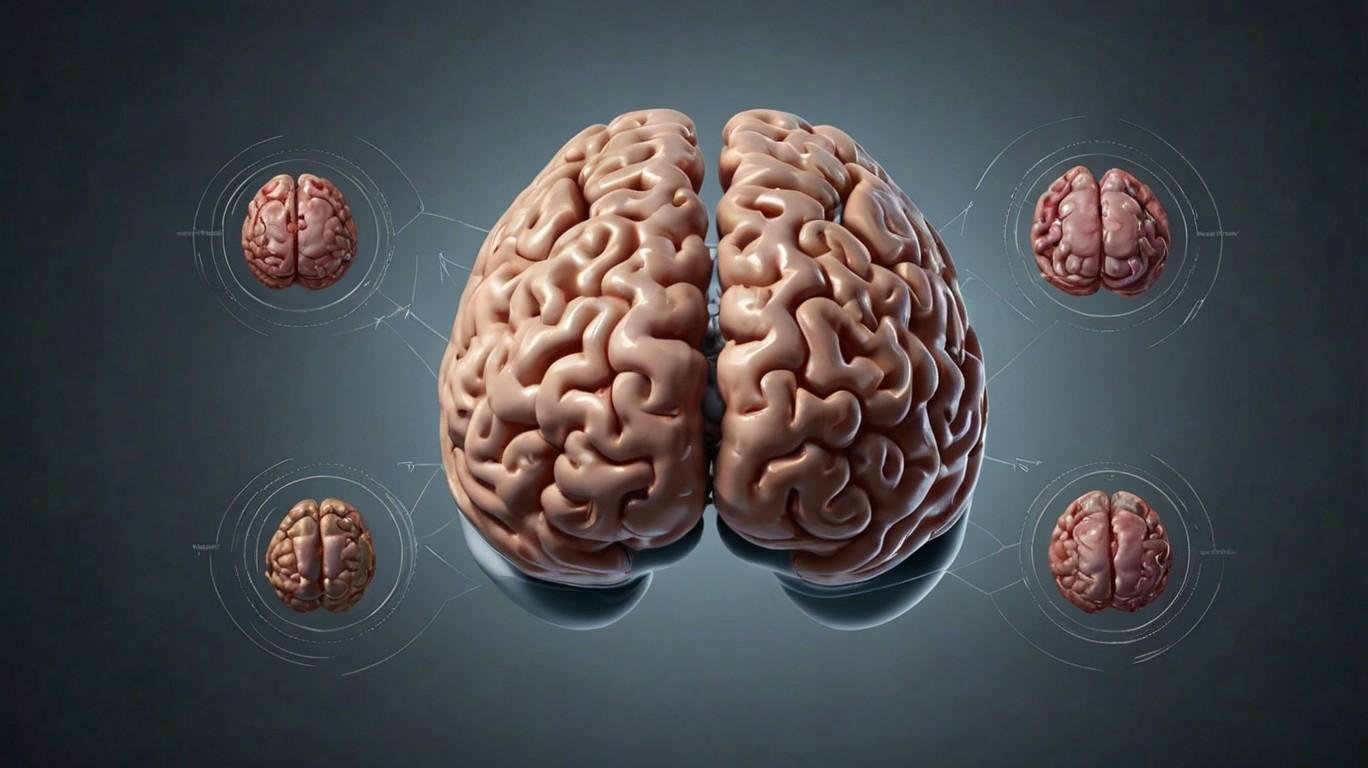
Chemotheraphy
Cellphone use has sparked debates regarding its potential link to brain cancer. Research remains inconclusive, leaving many questions unanswered. Understanding the risks associated with frequent mobile usage is essential for informed health choices. Stay updated on the latest studies to better protect yourself.
The topic of cellphone use and its potential link to brain cancer raises many questions, particularly regarding treatment methods like chemotherapy. Understanding chemotherapy’s role in this context is essential for those seeking information about cancer treatment options.
What Is Chemotherapy?
Chemotherapy involves the use of powerful drugs to target and kill cancer cells. This treatment is commonly used for various types of cancer, including brain tumors.
- Mechanism of Action: Chemotherapy works by disrupting the cancer cell cycle, preventing their ability to grow and divide: This can help shrink tumors and alleviate symptoms.
- Administration Methods: It can be administered through injections, oral medications, or intravenous infusions: The method chosen often depends on the type of cancer and the patient’s overall health.
Side Effects Of Chemotherapy
While chemotherapy can be effective, it comes with a range of side effects that vary from person to person. Understanding these effects is crucial for managing treatment.
- Common Side Effects: Patients often experience nausea, fatigue, and hair loss: These side effects occur because chemotherapy also affects healthy cells.
- Long-Term Effects: Some individuals may face long-term health issues, including organ damage or secondary cancers: Ongoing monitoring is necessary for these patients.
Chemotherapy For Brain Cancer
Specifically for brain cancer, chemotherapy plays a vital role in treatment plans. It can either be used alone or in combination with other therapies.
- Types of Chemotherapy Drugs: Certain drugs, such as temozolomide, are commonly prescribed for brain tumors: These drugs cross the blood-brain barrier, making them effective in targeting brain cancer cells.
- Combination with Radiation Therapy: Chemotherapy is often combined with radiation therapy to enhance treatment effectiveness: This dual approach can improve survival rates and decrease tumor recurrence.
Importance Of Personalized Treatment
Every cancer patient is unique, which is why personalized treatment plans are essential.
- Tailoring Treatments: Oncologists consider factors like tumor type, stage, and patient health: This ensures that the chosen chemotherapy regimen is the most effective.
- Monitoring Progress: Regular assessments help adjust treatment plans as needed: This flexibility can lead to better outcomes and fewer side effects.
Exploring chemotherapy provides insight into how it fits into the broader conversation about cellphone use and brain cancer. Understanding these aspects can empower individuals to make informed decisions about their health.
Treatment
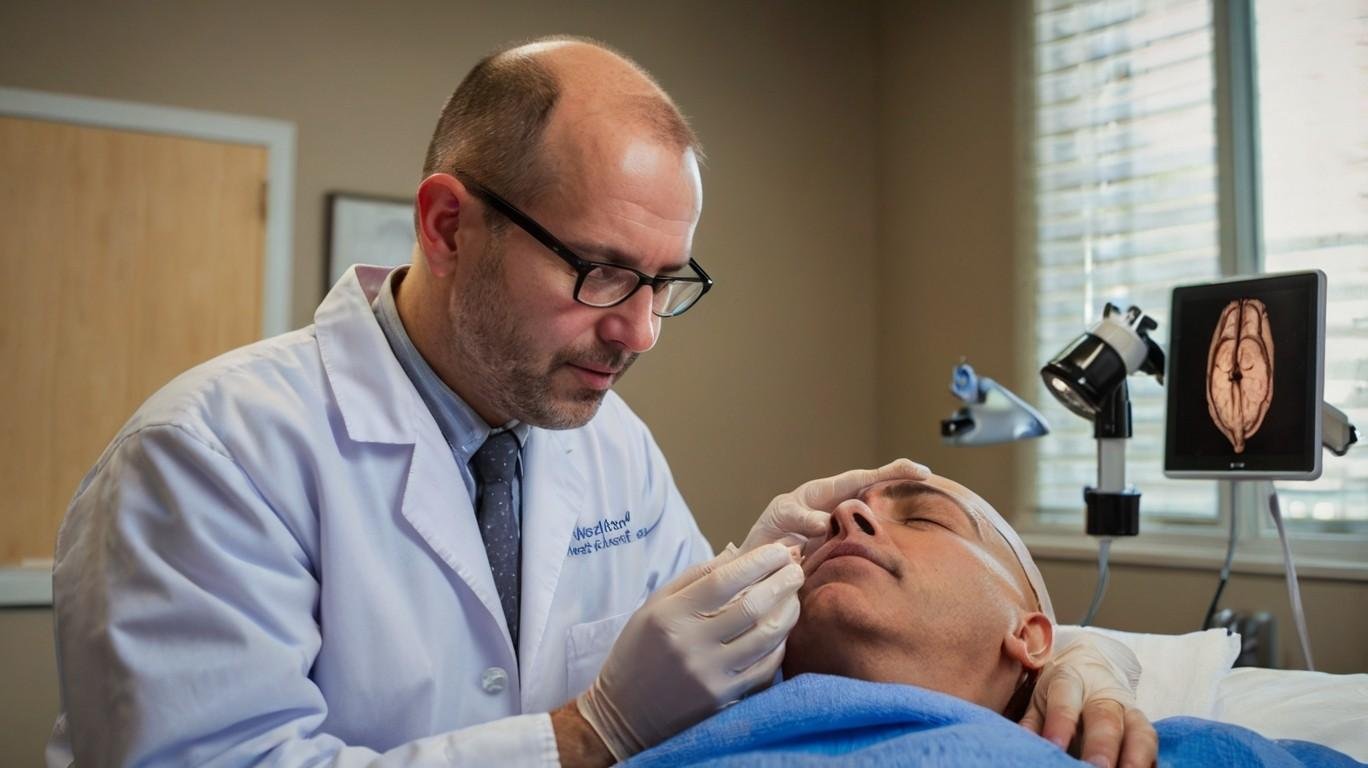
Cellphone use raises concerns about potential links to brain cancer. Research is ongoing, and experts continue to debate the risks. Staying informed and using devices wisely can help mitigate fears surrounding this issue.
Many people are concerned about the potential health risks associated with cellphone use, particularly regarding brain cancer. Understanding the treatment options available for those diagnosed with brain cancer can provide hope and direction for affected individuals and their families.
Types Of S Available
Various treatment options exist, tailored to the specific type and stage of brain cancer. Each method aims to target cancer cells while minimizing damage to surrounding healthy tissue.
- Surgery: This involves the removal of the tumor. Surgeons aim to excise as much cancerous tissue as possible while preserving brain function.
- Radiation Therapy: High-energy beams are used to kill cancer cells. This treatment can shrink tumors or target residual cancer cells post-surgery.
- Chemotherapy: Medications are administered to destroy or slow the growth of cancer cells. Chemotherapy may be used alone or in conjunction with other treatments.
- Targeted Therapy: This approach uses drugs that specifically target cancer cell characteristics, often leading to fewer side effects than traditional chemotherapy.
Palliative Care
Palliative care focuses on improving the quality of life for patients. This type of care is essential for managing symptoms and providing emotional support.
- Symptom Management: Medications may help alleviate pain, nausea, or seizures associated with brain cancer.
- Psychological Support: Counseling and support groups can aid patients and families in coping with emotional challenges.
- Nutritional Assistance: Dietitians may provide guidance on maintaining a healthy diet during treatment, which can enhance recovery.
- End-of-Life Care: For those in advanced stages, hospice services offer compassionate care to ensure comfort.
Clinical Trials
Participating in clinical trials can provide access to cutting-edge treatments not widely available. These trials often explore innovative therapies and new drug combinations.
- Research Opportunities: Trials may focus on new drugs, different radiation methods, or novel surgical techniques.
- Eligibility Criteria: Not all patients qualify for clinical trials; criteria often include specific cancer types and stages.
- Potential Benefits: Patients may experience the latest advancements in treatment, which could improve their outcomes.
- Risks Involved: As with any experimental approach, there may be unknown side effects or risks.
After Treatment Care
Post-treatment care is crucial for recovery and monitoring potential recurrence. Patients require ongoing support and medical follow-ups.
- Regular Check-ups: Routine scans and tests help detect any signs of returning cancer.
- Rehabilitation Services: Physical, occupational, and speech therapy can aid recovery of functions affected by treatment.
- Lifestyle Modifications: Patients may benefit from adopting healthier habits, including exercise and nutrition, to enhance overall health.
- Support Networks: Engaging with support groups can provide emotional resilience during recovery.
Exploring treatment options and understanding the journey ahead can empower those affected by brain cancer. Each step taken towards health can bring hope and healing in challenging times.
Caregiver Support
Concerns about cellphone use and brain cancer have sparked significant debate. Research continues to explore potential risks associated with prolonged exposure to radiation. Caregivers should stay informed and monitor developments to ensure the safety of their loved ones.
Navigating the complexities of health concerns can be overwhelming, especially when it involves a loved one. As research continues to explore the potential links between cellphone use and brain cancer, caregivers play a vital role in providing support and understanding.
Their emotional and practical assistance can make a significant difference during uncertain times.
The Importance Of
A strong support system is crucial for anyone facing health challenges. Caregivers serve as a lifeline, offering both emotional and logistical help. Their role is not only beneficial for the person affected but also for their own well-being.
- Emotional Stability: Caregivers provide a sense of security, helping loved ones feel less isolated during tough times.
- Information Gathering: They assist in researching medical information, including risks associated with cellphone use and brain cancer.
- Coordination of Care: Caregivers help organize medical appointments, treatment plans, and follow-up consultations.
- Stress Management: They can share the burden of worries, allowing the affected individual to focus on their health.
Resources For Caregivers
Accessing the right resources can empower caregivers in their roles. Numerous organizations and support groups offer assistance tailored to those supporting individuals with health concerns.
- Support Groups: Local or online communities provide a platform for caregivers to share experiences and coping strategies.
- Educational Materials: Websites and books offer valuable insights into brain health, cellphone safety, and caregiving techniques.
- Counseling Services: Professional help can offer emotional support and coping mechanisms for caregivers experiencing stress.
- Respite Care Options: Temporary relief services allow caregivers to take breaks, ensuring they remain healthy and effective.
Communication Strategies
Effective communication is key to providing the best support. Caregivers should prioritize open dialogue to understand their loved ones’ needs fully.
- Active Listening: Paying attention to verbal and non-verbal cues helps caregivers respond appropriately to concerns.
- Regular Check-ins: Consistent conversations ensure that emotional and physical needs are addressed promptly.
- Setting Boundaries: Caregivers should communicate their limits to prevent burnout, fostering a healthier dynamic.
- Encouraging Expression: Creating a safe space for feelings can help loved ones articulate their fears and concerns.
Self-care For Caregivers
Taking care of oneself is essential for effective caregiving. Prioritizing personal well-being enhances the ability to support others.
- Physical Health: Engaging in regular exercise and maintaining a balanced diet boosts overall energy levels.
- Mental Breaks: Scheduling time for hobbies or relaxation helps reduce stress and recharge mentally.
- Social Connections: Spending time with friends and family can provide emotional support and a sense of normalcy.
- Seeking Help: Reaching out for professional guidance when feeling overwhelmed is a sign of strength, not weakness.
Supporting a loved one through health challenges can be daunting, but with the right resources and strategies, caregivers can make a meaningful impact.
What To Eat
Cellphone use has sparked debates about its potential link to brain cancer. Research remains inconclusive, yet some studies suggest a slight risk. Staying informed and cautious while using mobile devices is essential for overall health.
The topic of cellphone use and its potential link to brain cancer often raises concerns, especially regarding lifestyle choices. Nutrition plays a crucial role in overall health, which may influence your body’s resilience against various conditions, including cancer. Adopting a balanced diet can be a proactive step toward well-being.
Foods Rich In Antioxidants
Incorporating antioxidant-rich foods can help combat oxidative stress, which is linked to cancer development. Here are some excellent options to consider:
- Berries: Blueberries, strawberries, and raspberries are packed with vitamins and antioxidants that may protect brain health.
- Dark chocolate: Contains flavonoids, which can enhance brain function and reduce inflammation.
- Nuts: Walnuts and almonds are great sources of healthy fats and antioxidants that support overall brain health.
Omega-3 Fatty Acids
Omega-3 fatty acids are known for their anti-inflammatory properties and potential neuroprotective effects. Including these in your diet may benefit brain health:
- Fatty fish: Salmon, mackerel, and sardines are rich in omega-3s, which may help reduce the risk of neurological disorders.
- Chia seeds: These tiny seeds provide a plant-based source of omega-3s and are easy to add to smoothies or salads.
- Flaxseeds: Ground flaxseeds are versatile and can be mixed into various dishes, offering essential fatty acids.
Cruciferous Vegetables
Cruciferous vegetables are known for their cancer-fighting properties. They contain compounds that may help detoxify the body:
- Broccoli: Packed with sulforaphane, a compound that has shown promise in inhibiting cancer cell growth.
- Cauliflower: Contains antioxidants and nutrients that support overall health and may reduce cancer risk.
- Kale: A nutrient-dense leafy green that provides vitamins and minerals essential for brain function.
Hydration And Herbal Teas
Staying hydrated is vital for maintaining overall health, including brain function. Herbal teas can be a beneficial addition to your hydration routine:
- Green tea: Rich in polyphenols, it may boost brain health and protect against cellular damage.
- Peppermint tea: Known for its refreshing flavor, it can enhance concentration and cognitive function.
- Ginger tea: Contains anti-inflammatory properties that may help support overall wellness and brain health.
Making mindful food choices can contribute significantly to your overall health and potentially lower the risk of conditions linked to cellphone use. By focusing on these nutrient-rich options, you can take proactive steps toward maintaining a healthy lifestyle.
Well-being
Cellphone use raises concerns about potential links to brain cancer. Research continues to explore whether prolonged exposure to radiation affects cellular health. Staying informed and cautious about device usage can enhance overall well-being.
Cellphone usage has become ubiquitous in our daily lives, but concerns about its potential health impacts linger. One topic that often surfaces is whether cellphone use can lead to brain cancer. To better understand this issue, it’s essential to explore its implications on well-being.
Mental Health Implications
In our tech-driven world, mental health is a critical aspect of well-being. The relationship between cellphone use and mental health deserves attention.
- Increased Anxiety: Excessive cellphone use can heighten feelings of anxiety, particularly from social media interactions: The constant notifications and updates create a pressure to stay connected, leading to stress.
- Sleep Disruption: Late-night screen time can interfere with sleep patterns: The blue light emitted by devices affects melatonin production, making it harder to fall asleep.
Physical Health Considerations
Physical well-being is equally essential. Understanding how cellphone habits impact our bodies can help us make informed choices.
- Posture Issues: Prolonged cellphone use can lead to poor posture: Hunching over devices may result in neck and back pain, commonly referred to as “tech neck.”
- Eye Strain: Staring at screens for long periods can cause digital eye strain: Symptoms include dryness, irritation, and blurred vision, which can affect daily activities.
Social Connectivity
Cellphones have transformed how we connect with others, impacting our social health significantly.
- Reduced Face-to-Face Interaction: Heavy reliance on texting and calls can diminish in-person conversations: This may lead to feelings of isolation, despite being more “connected.”
- FOMO (Fear of Missing Out): Social media can create a constant fear of missing important events: This anxiety can strain relationships and affect overall happiness.
Healthy Usage Tips
Implementing healthier cellphone habits can enhance overall well-being. Consider these strategies to mitigate potential risks.
- Set Usage Limits: Establish daily limits for screen time: This can help create a more balanced lifestyle and reduce anxiety levels.
- Engage in Digital Detox: Regular breaks from devices can improve mental clarity: Taking time away from screens allows for better focus and relaxation.
Tests & Screenings
Cellphone use raises concerns about potential links to brain cancer. Research continues to explore the effects of electromagnetic radiation on brain health. Regular tests and screenings can help monitor any health changes related to technology usage.
Cellphones have become an integral part of daily life, but concerns linger about their potential impact on health, especially regarding brain cancer. Understanding the tests and screenings available can help clarify any risks associated with cellphone use.
Common Tests For Brain Cancer
Various tests can help detect brain cancer, often initiated based on symptoms or risk factors. These tests provide valuable insights into brain health.
- MRI (Magnetic Resonance Imaging): This imaging technique uses powerful magnets and radio waves to create detailed images of the brain. It helps identify tumors and assess their size and location.
- CT Scan (Computed Tomography): A CT scan combines multiple X-ray images to create cross-sectional views of the brain. It is often used to detect abnormalities or bleeding.
- Biopsy: A biopsy involves removing a small sample of brain tissue for laboratory analysis. It helps determine whether a tumor is cancerous.
Screening Recommendations
Screening for brain cancer isn’t routine for everyone. Certain factors can influence the need for screening.
- Family History: Individuals with a family history of brain tumors may require more frequent screenings. Genetic predispositions can increase risk levels.
- Symptoms: Persistent headaches, seizures, or vision changes warrant immediate evaluation. These symptoms can indicate underlying issues.
- Occupational Exposures: Those exposed to certain chemicals or radiation at work may need regular screenings. Occupational hazards can elevate risks for developing brain conditions.
Understanding Risks And Benefits
Knowing the risks and benefits of testing is essential for informed decision-making regarding brain health.
- Risk Assessment: Tests can identify brain cancer early, potentially improving treatment outcomes. However, they may also lead to anxiety or unnecessary procedures.
- Early Detection: Early detection often results in better prognosis and treatment options. Catching issues early makes a significant difference in recovery.
- Informed Choices: Understanding the implications of tests allows individuals to make educated health decisions. Weighing the pros and cons aids in personal health management.
Frequently Asked Questions
Can Cellphones Really Cause Brain Cancer?
Research on cellphone use and brain cancer remains inconclusive. Some studies suggest a potential link, while others find no significant risk. The World Health Organization classifies cellphones as possibly carcinogenic. However, more research is needed to establish a definitive connection between cellphone use and brain cancer.
What Does Research Say About Cellphones And Cancer Risk?
Current research offers mixed results regarding cellphones and cancer risk. Some studies indicate a slight increase in risk, while others do not. Long-term exposure effects are still being studied. It’s important to stay informed and follow guidelines on safe cellphone usage.
How Can I Reduce Cellphone Radiation Exposure?
To minimize cellphone radiation exposure, use speaker mode or headphones. Limiting call duration and avoiding calls in poor reception areas can also help. Keep your phone away from your body when not in use. These practices can significantly reduce your overall exposure to radiation.
Are Children More Vulnerable To Cellphone Radiation?
Children may be more susceptible to cellphone radiation due to their developing brains. Their thinner skulls and longer exposure times can increase risks. Experts recommend limiting children’s cellphone use and encouraging alternative communication methods. Awareness and precaution are essential for protecting young users.
Conclusion
The debate about cellphone use and brain cancer continues. While research shows mixed results, caution is wise. Limiting exposure, using speakerphone, or opting for wired headsets can help. Stay informed about new studies. Prioritize your health and safety as technology evolves.
Knowledge is key in making informed choices.

